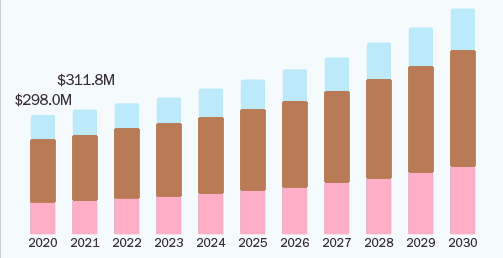Theme: Enlightening the Current Pathological Developments
PATHOLOGY CONGRESS 2022
Conference series takes massive pleasure in inviting all the participants from across the globe to attend the “20th ASIA PACIFIC CONGRESS” conference which will be held on November 21-22, 2022 Brisbane, Australia.
Conference series organizing 1000+ international Events each year on Pharmaceutical Sciences, Clinical, Medicine, and Science & Technology once a year across USA, Europe, Asia, Middle East and United Kingdom with support from a thousand a lot of scientific societies and publishes 700+ open access journals that contains over one hundred thousand eminent scientific personalities, putative scientists as editorial board and organizing committee members.
Pathology is a topic that goes beyond medical guidelines of professionals. Pathology Congress 2022 puts together all the extroverts under one umbrella with current progress. Pathology is the general study of disease, incorporating a wide range of departments of biological science research and medical fields to describe work within the modern medical field of general pathology, which comprises the diagnosis of any specific disease generally over tissue, cell, and body fluid samples analysis. The pathology practitioner's physician is called a pathologist. Laboratory medicine is the medicine branch in which tissue, fluid or complex tissue examples are examined outside. Teams of medical practitioners and scientists work together and to examine bodily fluid to find out the persons illness. These teams are made up of pathologists, who can either be health professionals with specialist skills in the laboratory or scientists with extensive training in the healthcare setting, as well as biomedical scientists and support personnel. Pathologists and consultant clinical scientists are consulted by doctors, nurses, surgeons, and other medical personnel for guidance on the type and severity of a patient's condition, ensuring that they receive the best care possible. Pathologists are healthcare professionals and scientists who specialized in disease and illness. They apply their knowledge to support many facets of healthcare, from advising physicians on the proper management of prevalent diseases to exploiting cutting-edge genetic technologies.
Pathology Congress 2022 will exhibit the products and services from commercial and non-commercial organizations like Pathology Lab Equipment manufacturers, Clinical Trial Sites, Business delegates, lab equipment, Cell Diagnostics Laboratories, and Equipment Manufacturers
Track 1: Pathology Pathology (word derived from the Ancient Greek roots of pathos meaning suffering" and –logy "study of") is a significant field in modern medical diagnosis and medical research, concerned mainly with the causal study of disease, whether caused by pathogens or non-infectious physiological disorder. It is a broad and detailed discipline of science that aims to comprehend how tissues and cells are damaged, how the body reacts to the damage, and how it heals itself. Cellular responses to damage, necrosis, inflammation, wound healing, and neoplasia are among the topics of investigation. Pathology terminology: A patient is a person who has a sickness. Lesions are the distinctive alterations in tissue and cells brought on by illness in a human or an experimental animal.
Track 2:Hematopathology
The study of diseases and disorders affecting and discovered in blood cells, their synthesis, and any organs and tissues involved in haematopoiesis , such as bone marrow, the spleen, and used in the diagnosis and treatment of illnesses including leukaemia and lymphoma; methods and technology used in these processes include flow cytometry research and immunohistochemistry. Track 3: Anatomical pathology The area of medicine called anatomical pathology, often known as anatomical anatomy, deals with the examination of body organs and tissues (groups of cells). Along with radiography and other subspecialties of pathology, anatomical pathology is regarded as one of the diagnostic areas of medicine (e.g. microbiology and chemical pathology). Its responsibilities include figuring out the root causes of specific illnesses and the effects they are having on the body, assisting with the selection of the appropriate course of therapy, helping to provide a diagnosis, and figuring out what might have contributed to a person's demise. Track 4: Clinical pathology Clinical pathology uses microscopic examination of individual cells, laboratory testing of blood and other physiological fluids and tissues, and disease diagnosis to support the diagnosis. Laboratory findings are delivered swiftly, effectively, and thoughtfully by our board-certified veterinary clinical pathologists, technologists, technicians, and support staff. Our work aids in the diagnosis and care of a wide variety of animal species for researchers, clinicians, referring veterinarians, and students.
Track 5: Chemical pathology The use of biochemical and molecular biological techniques in the diagnosis (and occasionally the therapy) of disease is known as chemical pathology or clinical biochemistry.
Track 6: Neuro pathology
The study of nervous system pathogens, or neuropathology, typically involves either surgical tumour or, in rare occurrences, whole brains from autopsies. Anatomic pathophysiology, neurosciences, and neurology fall under the umbrella of neuropathology. Neuropathology is regarded as anatomical pathology's subdivision in many English-speaking countries.
Track 7: Pulmonary pathology Anatomic pathology's branch of pulmonary pathology deals with the diagnosis and characterization of malignant or benign conditions affecting the lungs and thorax pleura. Bronchoscopic transthoracic biopsy, Computed tomography percutaneous biopsy, and video-assisted thoracic surgery are frequently used to obtain diagnostic specimens. These examinations may be required to differentiate between infections, inflammatory disorders, and hyperplastic conditions.
Track 8: Renal pathology Anatomic pathology has a subfield called renal pathology that focuses with the diagnosis and analysis of kidney disease. Renal pathologists engage closely with nephrologists and transplant surgeons in a medical environment; these specialists frequently obtain diagnostic samples via interventional renal biopsy. To arrive at a definitive diagnosis, the renal pathologist must combine information from conventional microscope histology, electron microscopy, and antibody. Medical renal disorders can damage one or more of the following compartments: capillaries, tubules and interstitial fluid, or renal pelvis
Track 9: Surgical pathology To facilitate in the treatment of a disease and the formulation of a therapeutic approach, surgical pathology is the study of tissues taken from living patients during surgery. In a number of organ systems and medical specialisations, the surgical pathologist frequently offers consultation services. Surgical pathologists offer second opinions or diagnostic information. Track 10: Oral and maxillofacial pathology One of the nine dental specializations authorized by the American Dental Association is maxillofacial pathology, which is occasionally seen as a specialization in both dentistry and pathology.
Track 11: Dermatopathology Dermatopathology is a subspecialty of dermatology and pathology that includes the investigation of skin diseases at an infinitesimal level. Dermatopathology additionally involves examining the potential reasons for skin diseases. Histopathology conferences at a fundamental level. Skin biopsy is performed to obtain a definitive conclusion and inspected with a magnifying glass or subjected to other atomic tests.
Track 12: Digital pathology Digital pathology is a subfield of pathology that focuses on data management based on information generated from digitized specimen slides. Through the use of computer-based technology, digital pathology practices virtual microscopy. Slides of glass are converted into digital slides that can be viewed, managed, shared and analysed on a computer monitor. With the practice of Whole-Slide Imaging (WSI), which is another name for virtual microscopy, the field of digital pathology is growing and has applications in diagnostic medicine, with the objective of obtaining diagnoses, prognoses and disease prediction due to to success in Artificial Intelligence and Machine Learning.
Track 13: Molecualar pathology The study and diagnosis of disease through molecular analysis of organs, tissues, or biological fluids is the focus of molecular pathology. Anatomic pathology, clinical pathology, molecular biology, biochemistry, proteomic, and genetics generally share some aspects of the process with molecular pathogenesis, which would be a multidisciplinary by nature. Track 14: Forensic pathology The treatment of human corpses as forensic evidence is distinct from other types of evidence. To determine the cause and method of any violent, unusual, or premature death, the remains are subjected to an autopsy. A post-mortem examination will be performed by a forensic pathologist, who will also take death scene evidence into account.
Track 15: Histopathology The study of cells under a microscope that have been dye-stained to make them more visible or easier to view is known as histopathology. Frequently, antibodies are applied to mark multiple cellular components with different dye or fluorescence tints. Following the extensive use of the microscope in pathology, numerous innovative techniques for preserving and staining tissue were established.
Track 16: Immunopathology The study of immune system abnormalities is known as immunology or immunopathology. Allergies, inheritable diseases, immunological reactions to foreign substances, and organ transplant rejection are all covered.
Track 17:Experimental pathology
A theory testing or creating field of research in experimental pathology is disease-oriented theory. The Branch of Research Pathology's mission is to perform laboratory testing that offer insights into cutting-edge clinical treatments for patients with unmet needs. Tumour biology, cancer metastasis and tumorigenesis, UV oncogenesis, cancer immunology, wound healing, stem cell biology, HIV, HCV, and herpes virus infection, and bacterial pathogenesis are the main research fields. These all might have clinical significance.
Track 18: Geographicalpathology The field of pathology that is concerned with the origin of particular pathogenic disorders. It mimics descriptive epidemiology and may be comparable to it, or it may be a more anecdotal element of pathologists' job.
In the science of pathology, body fluids, organs, and tissues are analysed in order to determine the cause, origin, and nature of diseases. To choose the best course of therapy for various illnesses, it determines the disease's true state. Digital and anatomical pathology are the two main categories. According to a market research study by Facts and Factors, the Global Digital Pathology Market size & share revenue was estimated to be worth around USD 740.26 million in 2021 and is predicted to earn around USD 1738.82 million by the end of 2028, compound annual growth Rate of approximately 13.8 percent between 2022 and 2028. According to the analysis provided by our research team, the digital pathology market is expected to expand between 2022 and 2028 at a CAGR of roughly 13.8%. By Services, during the forecast period, it is anticipated that the software segment will expand more quickly.

Based on the end-user category, it is predicted that by 2028, the Pharmaceutical and biotechnology firms segment will occupy the greatest share of the market. The North American region is anticipated to rule the global digital pathology market in terms of geography. The use of digital pathology to promote lab efficiency, the rising cancer incidence, and the expanding utilisation of digital pathology in drug development and companion diagnostics are the primary factors of market expansion.
It is possible that the anatomic pathology market may expand globally. According to an estimate made in a research, at an average rate of 6.5 percent between 2017 and 2025. An increase in the clinical use of biomarkers helps pathologists understand the molecular basis of disease pathogenesis and further influences clinical decision-making, both of which improve patient outcomes. The market is being attributed to the increasing reliance on pathology tests and procedures based on biomarkers to examine common malignancy and neoplastic.
DIGITAL PATHOLOGY MARKET ANALYSIS:
A computer-enabled, image-based information platform called "digital pathology" aids in the data management generated by digital slides. A research pipeline can benefit from digital pathology technology in two ways. The first is that macroscopic photographs, tissue microarrays, and full slide images can all be arranged using the designated storage space and viewing apps. The creation and use of image analytical techniques is the second way that digital pathology is used in research. The global market for digital pathology, which was expected to cost $735.75 million in 2020, is forecast to expand to $1791.30 million by 2030, with a CAGR of 9.3 percent between 2021 and 2030.
Conference series takes massive pleasure in inviting all the participants from across the globe to attend “18th Asia Pacific Pathology Congress” webinar which will be held during April 12-13, 2021, This webinar has competent keynote talks, verbal speeches, young research forums and exhibitions offering visions to the significance and efficiency of Pathology research.
Conference series organizing 1000+ international Events each year on Pharmaceutical Sciences, Clinical, Medicine, and Science & Technology once a year across USA, Europe, Asia, Middle East and United Kingdom with support from a thousand a lot of scientific societies and publishes 700+ open access journals that contains over one hundred thousand eminent scientific personalities, putative scientists as editorial board and organizing committee members.
Pathology is a topic that goes beyond medical guidelines of professionals. Pathology Congress 2021 puts together all the extroverts under one umbrella with current progress. Pathology is the general study of disease, incorporating a wide range of departments of biological science research and medical fields to describe work within the modern medical field of general pathology, which comprises the diagnosis of any specific disease generally over tissue, cell, and body fluid samples analysis. The pathology practitioner's physician is called a pathologist. Laboratory medicine is the medicine branch in which tissue, fluid or complex tissue examples are examined outside
Conference Highlights
- Pathology
- Hematopathology
- Anatomical pathology
- Clinical pathology
- Chemical pathology
- Neuro pathology
- Pulmonary pathology
- Renal pathology
- Surgical Pathology
- Oral and maxillofacial pathology
- Dermatopathology
- Digital pathology
- Molecular pathology
- ForensicPathology
- Histopathology
- Immuno pathology
- Experimental pathology
- Geographical pathology
To share your views and research, please click here to register for the Conference.
To Collaborate Scientific Professionals around the World
| Conference Date | November 21-22, 2022 | ||
| Sponsors & Exhibitors |
|
||
| Speaker Opportunity Closed | |||
| Poster Opportunity Closed | Click Here to View | ||
Useful Links
Special Issues
All accepted abstracts will be published in respective Our International Journals.
Abstracts will be provided with Digital Object Identifier by



















